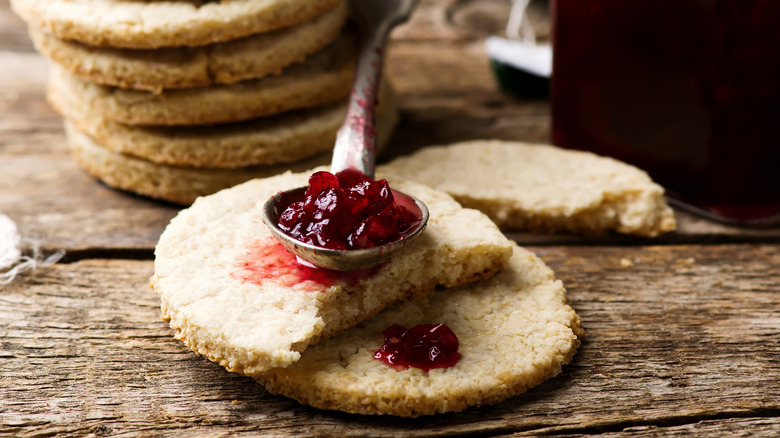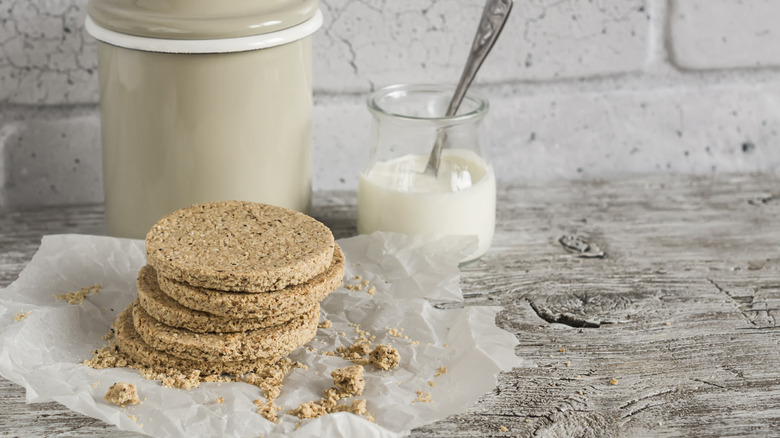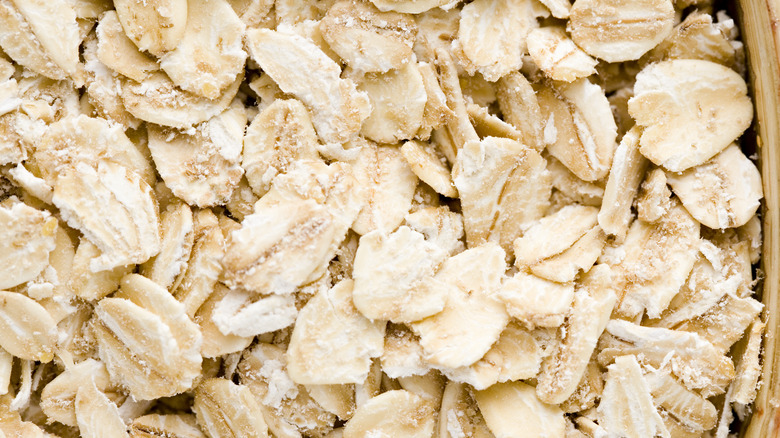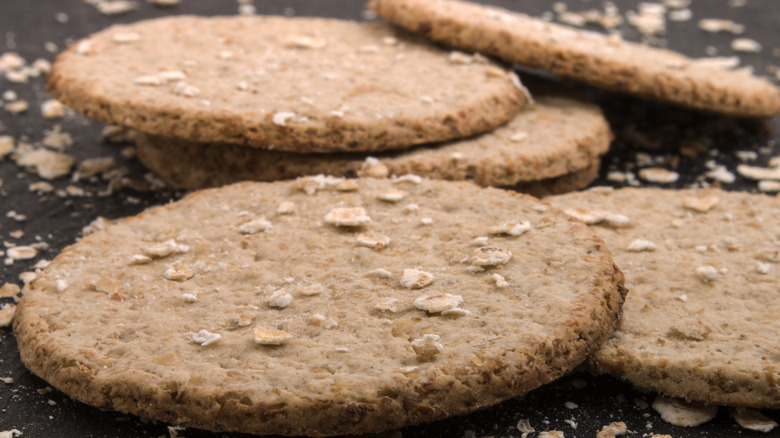The Rustic Oatcakes You'll Find Across Nova Scotia
If you don't know much about one of Canada's most underrated regions, the Maritimes, we don't blame you. These provinces neighboring the Atlantic are somewhat isolated, and they are known for their vast wilderness, thriving fishing industries, and stunning ocean vantage points. And, as we always like to point out, they also have a rich food culture worth exploring.
Canada's most populated Maritime province, Nova Scotia, has plenty of tasty meals we're positive you haven't heard of before. For instance, the popular donair wrap is so well-liked across the province, it has earned the status of Halifax's official food. Similar to Middle Eastern shawarma, the donair often is filled with "spiced beef, cooked on a spit and shaved onto a pita, doused in a sweet garlic sauce and garnished with tomatoes and raw onions," according to Tourism Nova Scotia.
Another uniquely Nova Scotian dish is rappie pie. This classic Acadian dish is made from chicken and grated potatoes, and it is definitely a must-try savory treat, especially if you find yourself in the Southern region of the province (via Yarmouth and Acadian Shores).
Of course, it is no secret that with a name like Nova Scotia (which means New Scotland in Latin, as per the Canadian Government) that many traditional meals in the province also have Scottish origins. And it's there, in the cross between Scottish and Canadian heritage, where the humble oatcake lies. This popular sweet and salty snack is popular across Nova Scotia and comes with an interesting history.
History of oatcakes
It may come as no surprise that oatcakes first arrived in Canada thanks to Scottish immigrants in the 18th century, according to ASI Heritage. The first renditions of the recipes were only crafted to make savory snacks. However, through the years, sugar and other sweet ingredients were incorporated into recipes. Soon, oatcakes took on both a sweet or salty flavor.
As per The Canadian Jewish News, oatcakes were often enjoyed all day decades ago, often making an appearance at every meal. Part of their popularity was convenience, as they could be easily brought along as a hearty snack during travel.
Today, according to The Spruce Eats, oatcakes are still eaten throughout the province, especially on Cape Breton Island, which is located on the Northern tip of Nova Scotia. Kelly Neil notes that this area of Nova Scotia in particular has a high level of families with Scottish roots. The most common variety found here is the buttery and crunchy oatcake.
Ingredients in oatcakes
The first ingredient that goes into oatcakes is, of course, rolled oats. According to ASI Heritage, oats are unique among grains in that they include high amounts of protein, as well as a combination of dietary fiber and other important vitamins and minerals.
The site also notes that, historically, oats have been commonly used throughout Scotland due to the crop's tolerance for chilly, wet weather. Stories from the fourteenth century describe how Scottish soldiers' main sources of sustenance were a sack of oats and the Scottish equivalent of an iron griddle, proving the heartiness of this snack.
Among other dry ingredients, The Spruce Eats includes all-purpose flour, brown sugar, sea salt, and baking soda — keeping it short and sweet. A fat, like shortening or unsalted butter, is also mixed in with the water.
While traditional oatcakes don't have any other additions, Kelly Neil points out that anything from spices (often cardamom, cinnamon, or nutmeg) to different nuts and seeds to dried fruit can also be thrown into the dough for added flavor.
How oatcakes are made and eaten
According to The Spruce Eat's recipe, the first step to making oatcakes is to combine all the dry ingredients into a bowl and massage the butter into them. Once water is added to the mixture, a sticky dough will form.
The dough gets rolled out and cut into smaller circles, rectangles, or triangles. Any shape will do! The pieces get baked until golden — but keep in mind the length you bake them determines if they will emerge chewier or much crunchy. So, bake knowing your preferences ahead of time.
If you're not keen on making your own oatcakes at home, don't worry. You can find oatcakes all over the province, from being fresh-baked in a local bakery to designated in to-go packages in grocery stores, as per Tourism Nova Scotia. They're very popular, so finding your own to try shouldn't be too hard.
Ideally, your oatcake can be paired with a hot cup of coffee or tea (we encourage dunking, always). Other varieties, as Tourism Nova Scotia points out, come drizzled with peanut butter or dipped in chocolate for that perfect sweet and salty combo. Fruit and butter are also common toppings. Whatever your oatcake preferences — whether chewy or crunchy, sweet or savory — we hope you partake in this Northern foodie experience.



